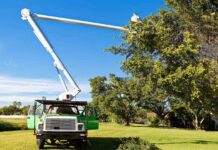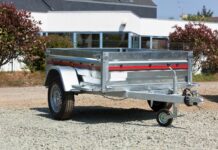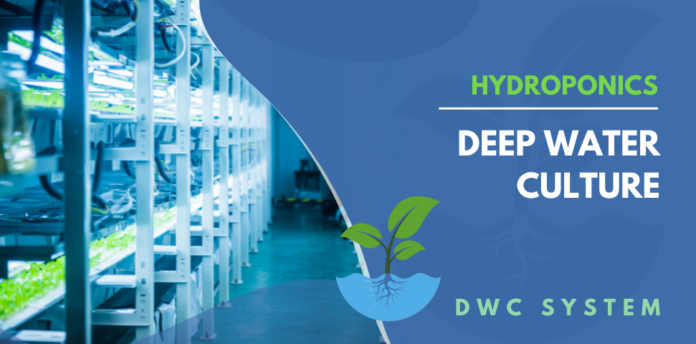
There are different types of hydroponic systems on the market currently. Hydroponics can provide massive yields without using any soil at all, yet there are different ways that hydroponics can be organized and set up so it might be a little intimidating to know where to begin. There are two dominant types of hydroponics systems that really have had a positive, measurable impact on our growth and yields. They are Deep Water Culture Hydroponics and Ebb and Flow Hydroponics. There are benefits and drawbacks to each but expect large yields from each.
What is “Hydroponics?”
Hydroponics is using nutrient-rich water to feed and water plant roots instead of growing them in soil. It requires a way to produce a constant flow of water to ensure oxygen circulates throughout the system and it necessitates continuous measuring of nutrient levels in a system so that plants do not get burned nor do they run out of nutrients.
Deep Water Culture (DWC) Hydroponics
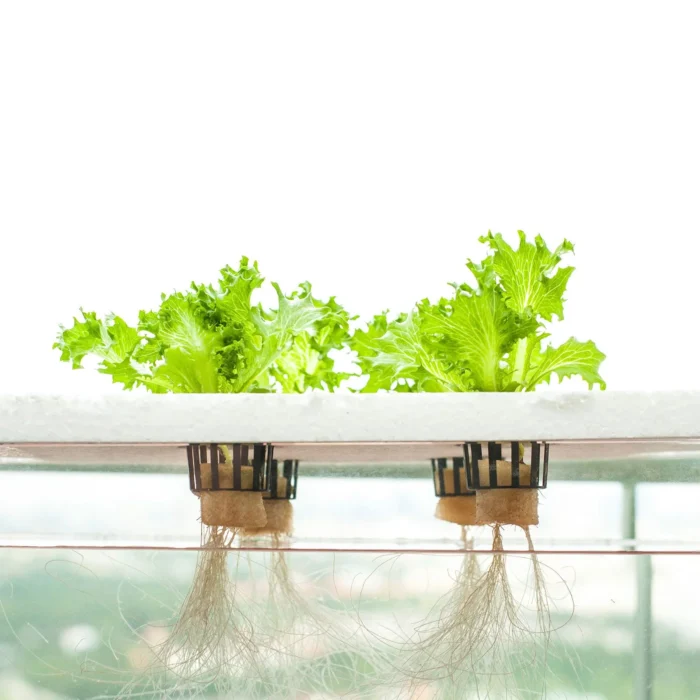
A DWC hydroponics system introduces a more sophisticated way to automate a hydroponics operation. Deep Water Culture (DWC) hydroponics is a hydroponics system organized to allow plant roots to dangle into an oxygenated nutrient-water solution where they absorb all the minerals required for growth. This gives plants a cleaner flavor, it improves pathogen resistance, and it encourages faster growth than soil cultivation. DWC is “deep” because it uses a large container that holds a lot of water, which in turn means a more stable nutrient solution and less effort monitoring for the grower.
Automatic DWC culture system expands on basic DWC systems in significant ways that encourage healthier plants, robust growth, larger yields, and easier management. Updated DWC hydroponic growing system features a unique top drip irrigation design: by utilizing a special air pump that provides air bubbles within the nutrient solution and a jet drip irrigation system located at the top of the container, we create a more suitable environment that stimulates faster root growth than conventional DWC systems. Simultaneously, the system provides water circulation that keeps the nutrient solution fresh and oxygenated for easy uptake.
VIVOSUN DWC systems are usually the complete kit that any grower needs to start their own operation. Each container holds up to 5 gallons of nutrient solution and is made of light-blocking polypropylene to ensure bacteria does not grow in the system. Each container also holds an 8-inch basket and includes handles for easier transport. The system is operated by a powerful air pump with air regulators to adjust the amount of air provided. Additionally, it includes clay pebbles as a grow medium, which keeps plants stable as they root, and it has a water level indicator making EC and pH sampling simple. Best practice is to use these systems as outlined here.
Operating the DWC system is simple: fill the container with your nutrient solution, fill the 8-inch basket with the clay pebbles, fit the plant into place, and plug in an air pump. The pump will help introduce oxygen into the container while agitating the nutrient mixture so nutrients dissolve evenly. Oxygen is crucial to hydroponic systems: without it, plants will struggle to absorb nutrients and will eventually drown, so we designed our pump to be more powerful and more reliable. Further, each container is able to house a single plant – this provides a major benefit for those growers who have plants in different stages and with different needs. It is uncommon for two plants to have exactly the same nutrient requirements, so when plants are connected to a single irrigation source some plants will thrive while others will struggle. By isolating plants into a single container, they are able to get the exact nutrient mixture they need, meaning they grow faster and healthier.
What is an Ebb and Flow System?
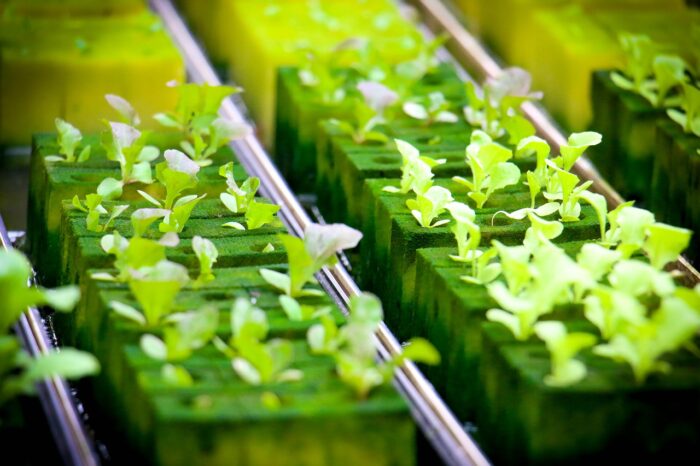
An Ebb and Flow system is similar to DWC, except that instead of having plant roots exposed to the reservoir directly, plants sit atop a tray or tube through which nutrient water passes by the effort of a water pump. Additionally, a drainage system is needed that allows the nutrient solution to return to the reservoir. Here are the components required:
- A reservoir to hold your nutrient solution
- A water pump that moves the nutrient solution
- A tube and a filter-nozzle that expels the nutrient solution
- A grow tray where your plants will sit and where their roots will dangle into
- Baskets to hold plants
- An overflow drain that allows the nutrient solution to return to the reservoir
- A timer to control the On/Off schedule (if your pump doesn’t include one)
- Some kind of media like coco coir or clay pellets
The reservoir below holds the nutrient solution and the water pump pulls that solution up into the grow tray. The grow tray fills with the solution (and oxygen through a bubbling action) and exposes the roots to the nutrients. Plant roots should be dangling down into the grow tray cavity and should be exposed to the nutrient solution. When the nutrient solution reaches the top of the tray you should have an overflow regulator ensuring that the solution doesn’t spill out. The water will drain back into the reservoir, eventually allowing the roots to dry out before the solution is fed again. Drying out is a positive because it reduces risk of pathogens.
The reservoir below holds your nutrient solution and the water pump pulls that solution up into the grow tray. The grow tray fills with the solution (and oxygen through a bubbling action) and exposes the roots to the nutrients. Your plant roots should be dangling down into the grow tray cavity and should be exposed to the nutrient solution. When the nutrient solution reaches the top of the tray you should have an overflow regulator ensuring that the solution doesn’t spill out. The water will drain back into the reservoir, eventually allowing the roots to dry out before the solution is fed again. Drying out is a positive because it reduces risk of pathogens.
Pros and cons of each system
| Deep Water Culture | Ebb and Flow | |
| Pros | · Quick growth
· Perfect for small spaces · Flexible for different plant sizes · Uses less water · Beginner friendly · Can build at home (don’t need to buy special containers) |
· Timer does most of the work
· Can be used with different grow media · Nutrient solution can be reused continuously · Great for plants with low water tolerance · Helps reduce risk of pathogens · Great for larger yields |
| Cons | · Can expose roots to too much water and cause rot
· Produces smaller plants · Difficult to feed/replace water · Hard to expand to more plants |
· A little difficult to set up
· Wastes more water · Takes up a little more space · Can be costly |
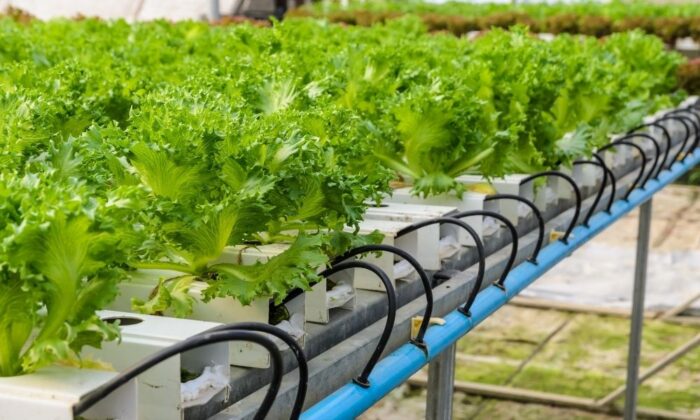
Conclusion
The best hydroponics system for growers is a Deep Water Culture system because it is easier to manage and has equally if not better results. Best practice is to ensure that water is changed frequently and does not rot or collect bacteria.



